Drying some oregano leaves to replenish our supply. Reminder to self: harvest a lot of oregano in the spring. Late oregano leaves start to get pretty imperfect.
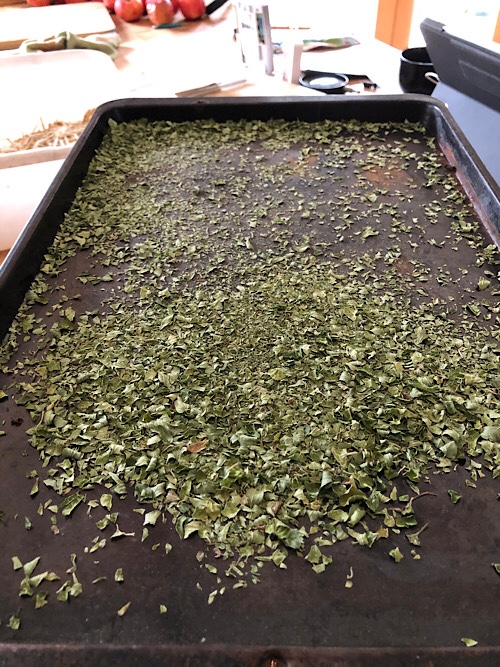
our maine home – zone 5b
Drying some oregano leaves to replenish our supply. Reminder to self: harvest a lot of oregano in the spring. Late oregano leaves start to get pretty imperfect.

We dismantled the last asparagus raised bed and transplanted the roots into line with the others. Then conjoined the beds into one long raised bed using some slab wood.
Asparagus roots form a huge thick mass that is hard to deal with. We ended up chopping the mass into four quarters, which could then be lifted into place. Mostly in the new end bed, but a few in between the existing beds and a few babies into the existing beds.
The project required moving a lot of dirt to fill these new areas. Most of it came out of the built-up potato area. Also some goat manure and leaf mulch.
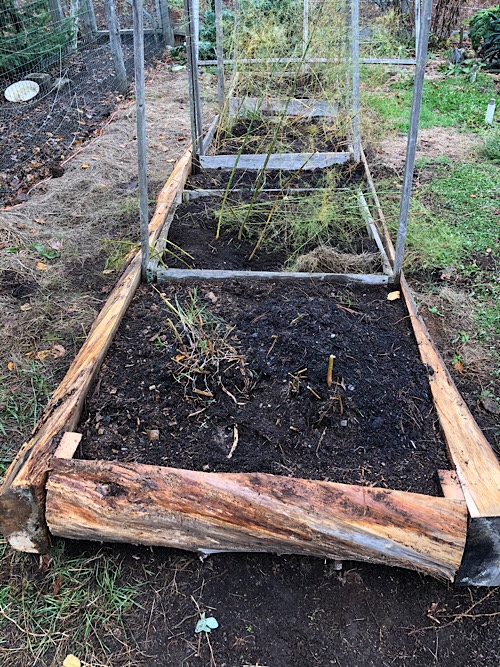
Not done, but at least the roots are covered. I hope they survive and settle into their new locations.
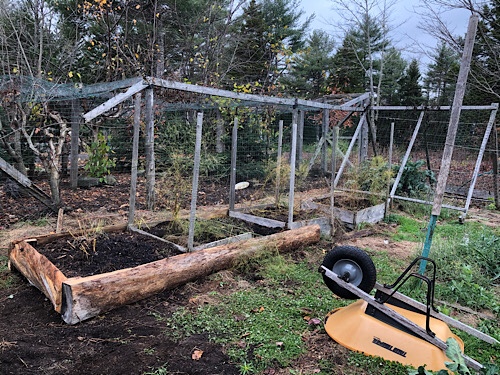
I also planted three lovely French lavender plants, two in the sandbox and one in the herb row.
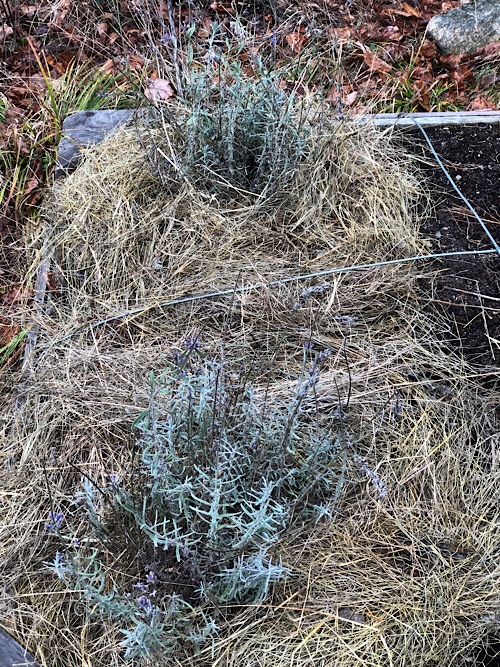
And I dug the rest of the horseradish up, as much as possible. I’m sure there are lots of root pieces still underground waiting to flourish as a large patch again next year.
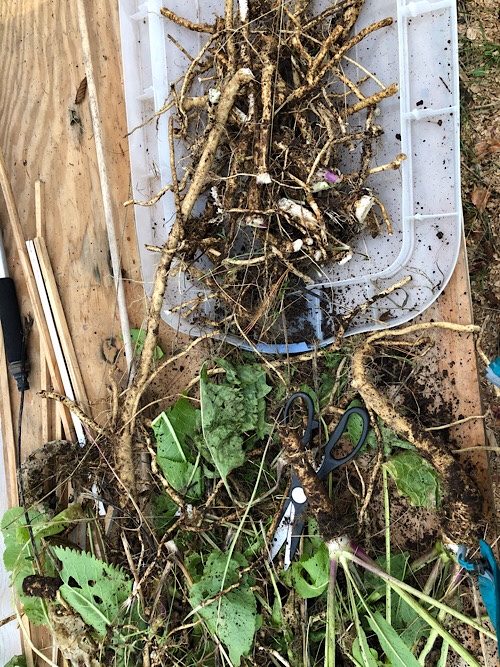

I harvested one row of the remaining basil patch in the hoophouse. Following this blog post’s recommendation of the best way, I washed and dried the leaves and stuffed them into freezer bags. Easy. Much easier than attempting to freeze as pesto in ice cube trays, which was honestly a disaster.
More basil to process, about three times that much again. I like it fresh but it’s starting to get brown.
An Oregon Cottage – Freezing Basil Leaves 6 Ways: Which is Best?
The green spears of chives show up, a welcome sight in the front flower garden by the bird feeder.
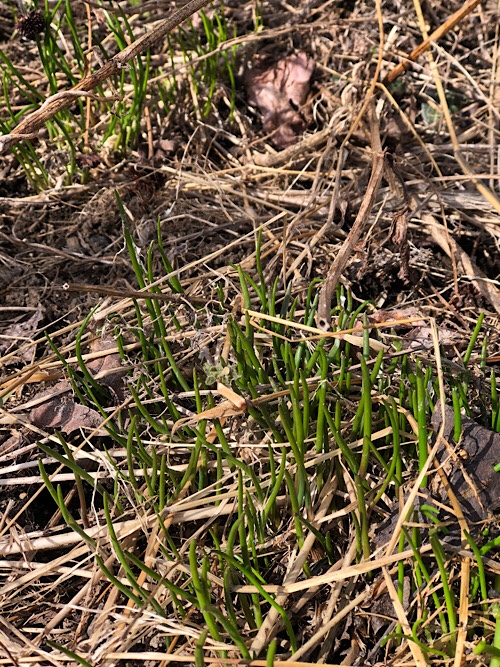
Is it still mid-August? A lot has happened. We harvested the fava beans on August 11. Had a big party, the third annual, to shuck the beans. I have three small freezer bags of leftovers, which is good. I didn’t take any pictures, unfortunately.
We have picked over 20 pounds of blueberries, all in the orchard except for two containers harvested atop Schoodic. I know that should be quarts, next year I’ll switch to the more typical measurement.
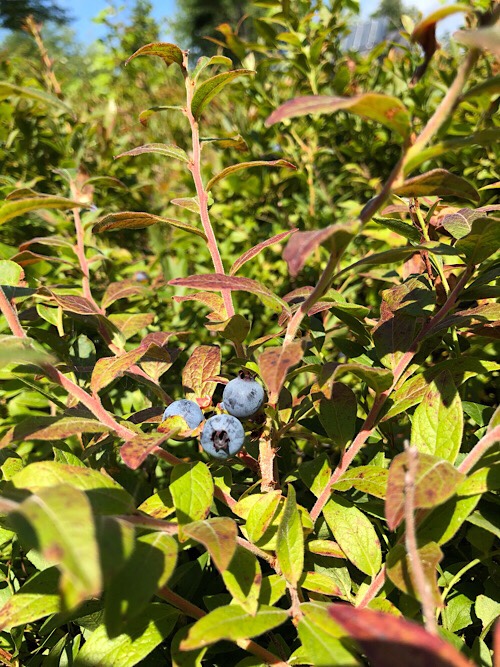
We are still waiting for the Reliance peaches to ripen. Last year they were all taken, probably by squirrels. This year we took more precautions (netting around the trunk). Sam propped up the heavy branches. They have great color, but are still quite hard.
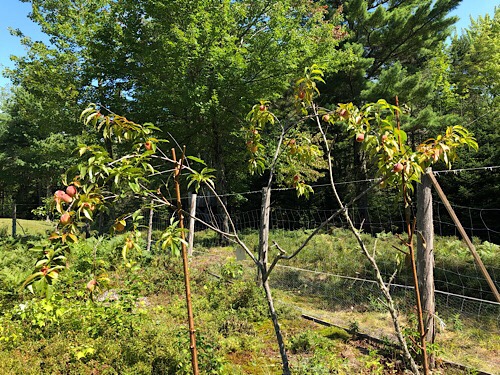

Sam’s working on improving the orchard fencing. Too many deer are getting in there.
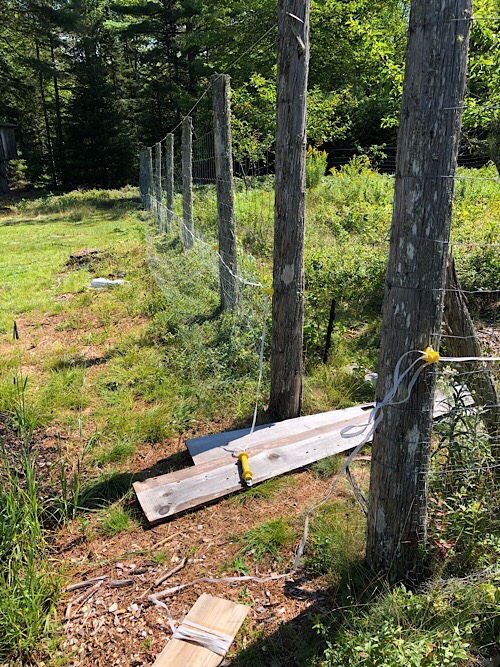
He also added two more raised beds in the hoophouse. Over the next few days I’ll plant some fall and winter greens in them. The peppers and eggplants in the older beds are growing but not exuberantly, but the basil in there is doing great. We had to protect those beds from deer who came to munch one variety of pepper when we opened the roof to the sun and rain.
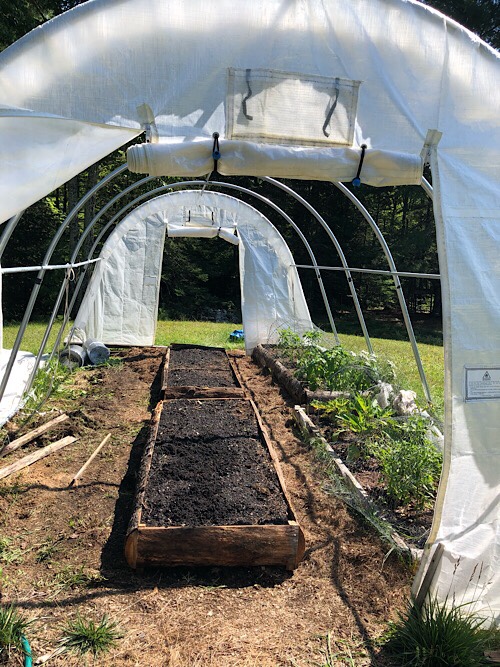
I’m picking green beans almost daily in the main garden. Also sowed some fall seeds in empty spots.
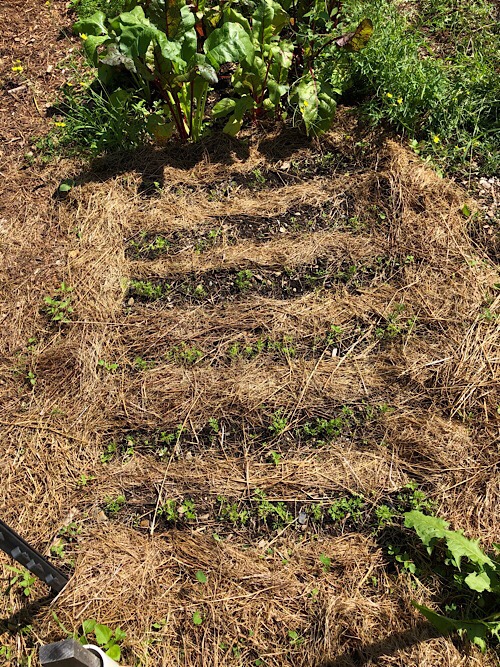
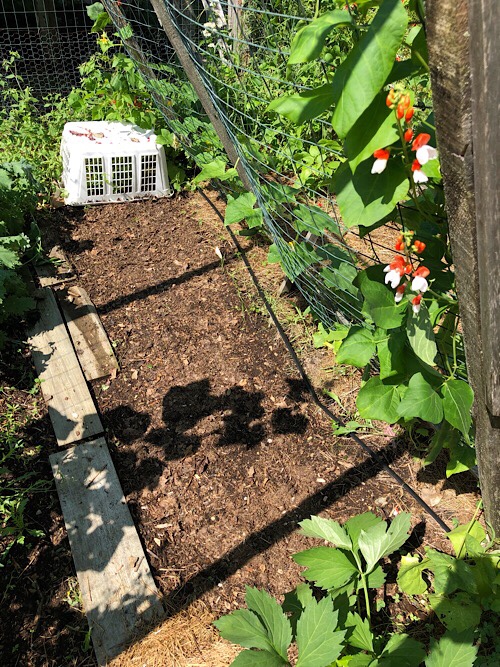
The fava bean area freed up, so we put up a pea trellis there. Also planted cilantro, broccoli rabe, and spinach in that area.
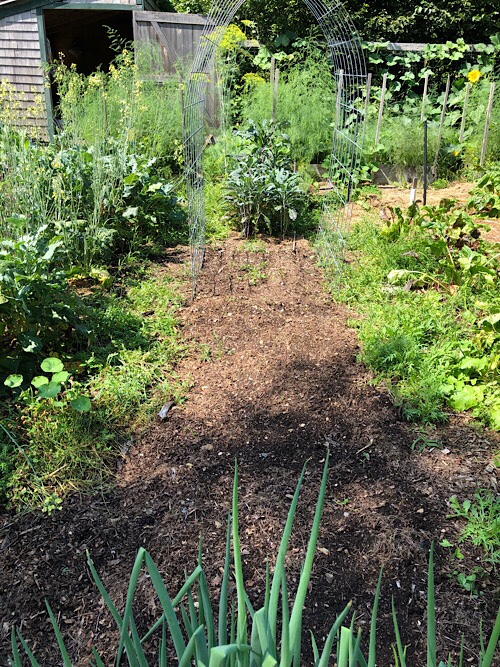
Harvesting lots of food: beets, cucumbers, a few ripe tomatoes, lettuce, escarole, radicchio, carrots, costata romanesca zucchini, kale, chard, dill, artichokes, broccoli, Savoy cabbage, fingerlings, strawberries, blackberries. Coming along: squashes, a few ears of corn, cabbage, soybeans, pattypan squash, lots of tomatoes!
Row by row scan:
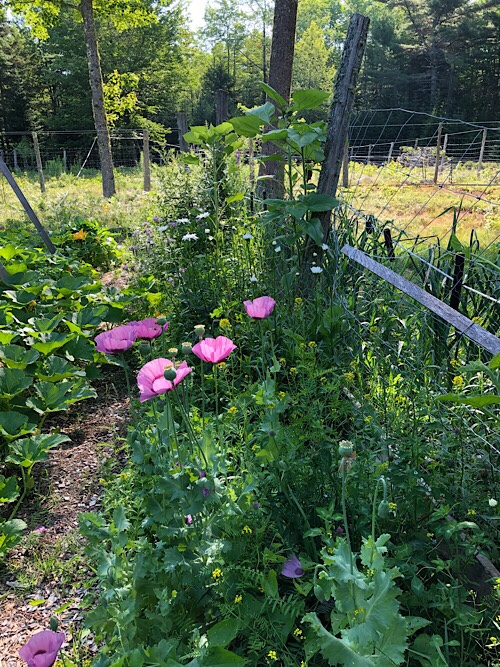
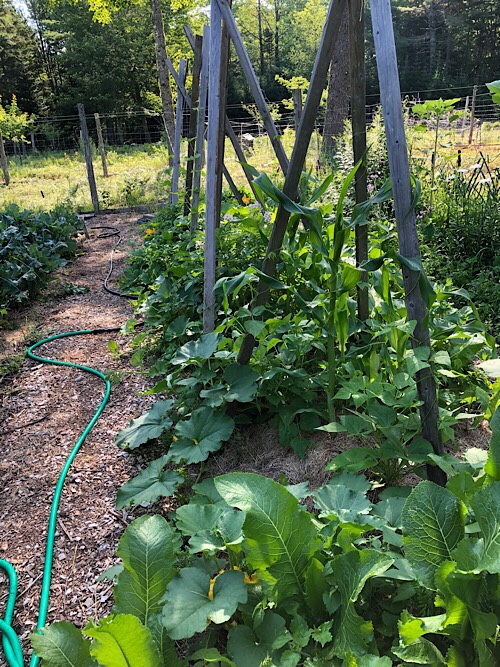
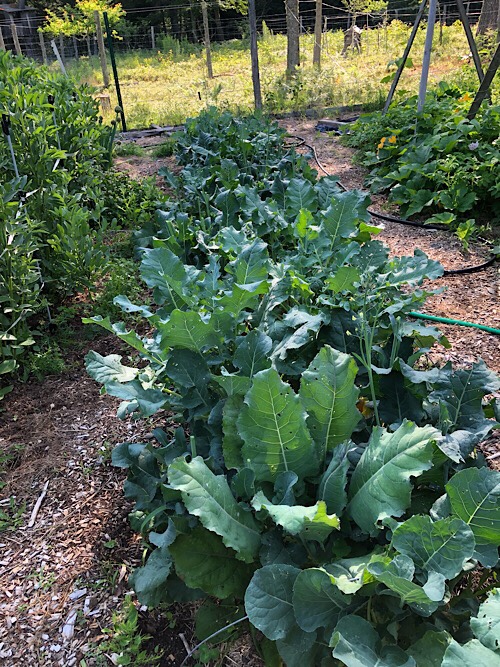
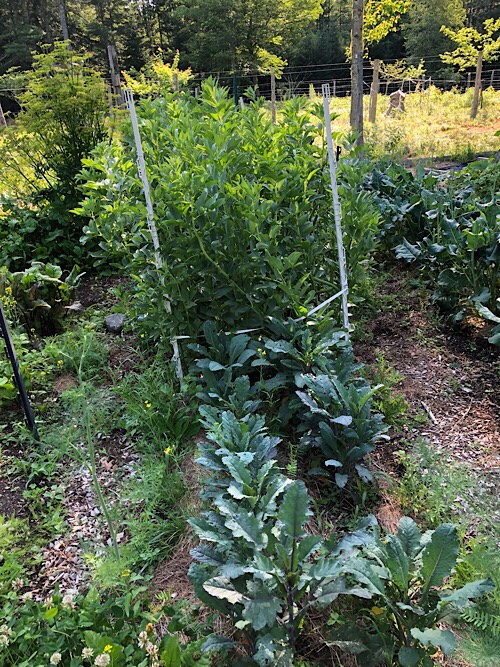

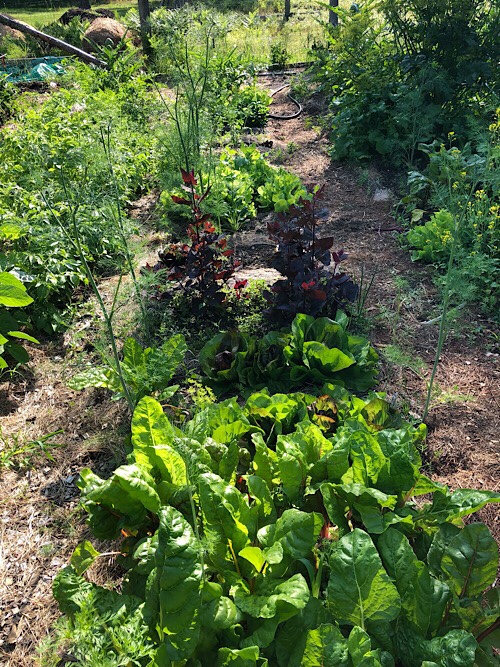
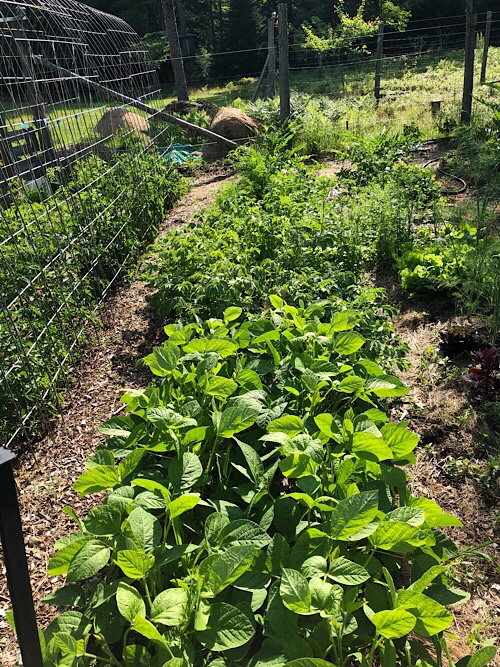
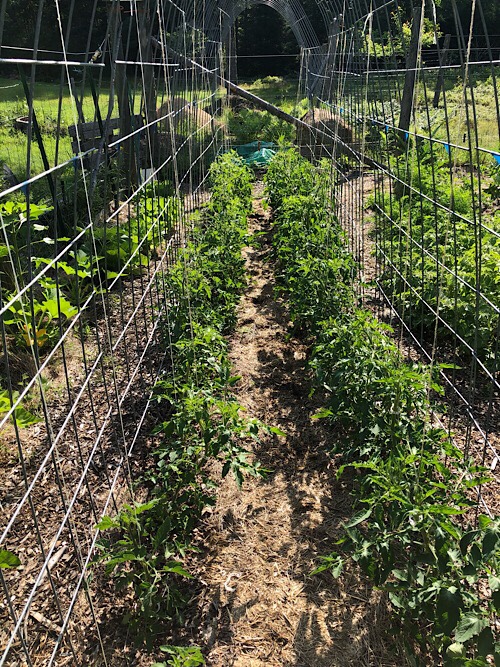
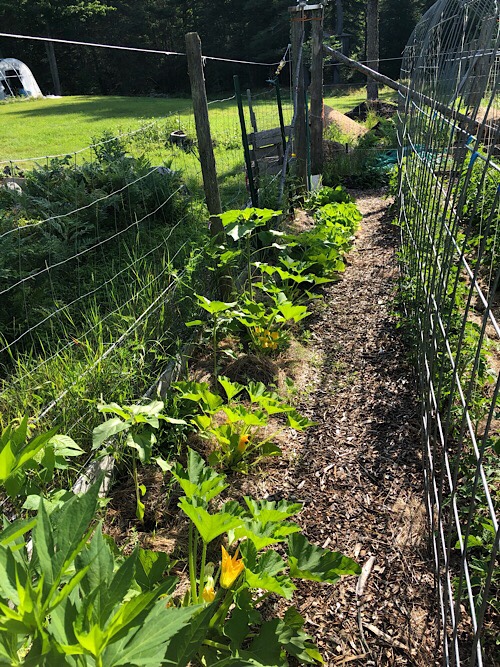
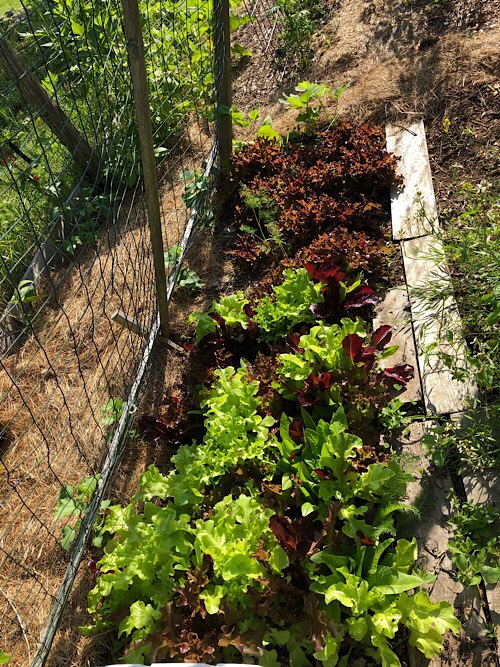
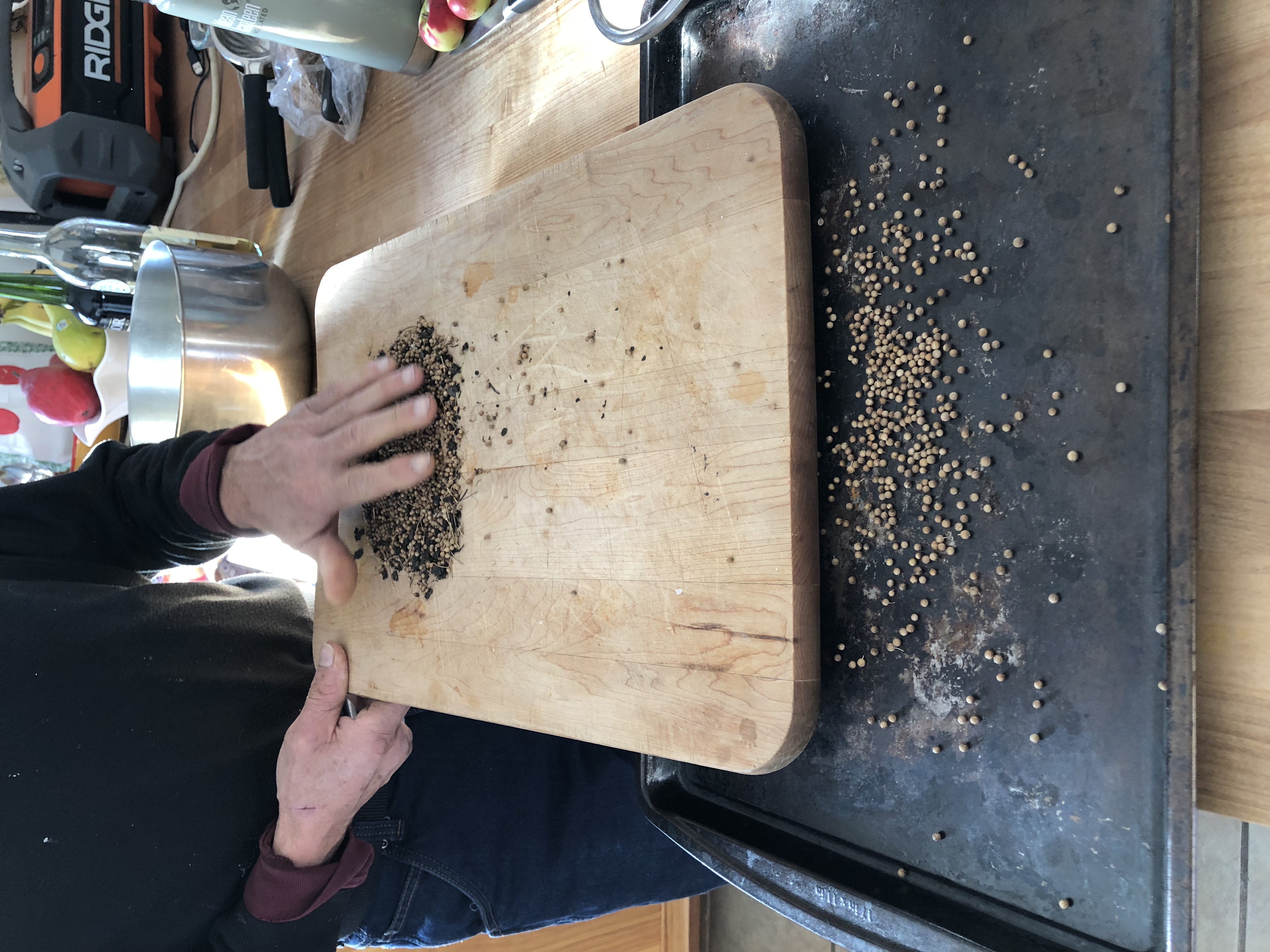
Low-tech method of cleaning coriander seeds. I got a small jar of fairly clean seeds. These have been stored on the plants in a pillow case outdoors to dry, harvested some time earlier in the summer.
I’ve never been able to grow as much cilantro as I want to eat, but I keep trying. There’s some baby cilantro out in the garden right now, under protection, in a probably vain hope that it will make it through the winter and take off in spring. It’s not known as a northern crop.
Now coriander is another story. I don’t know what to do with it in the kitchen, so I just save it year after year to replant in next year’s garden. This batch was quite dirty and really impossible to pick through. Sam got the idea that the seeds would roll and we hit on this solution.
We covered up the seedlings in the garden in anticipation of cold temps over the next few nights. This is an experimental bed. I don’t think they’ll all make it, maybe none of them will. Cilantro, lacinato kale, red lettuce, spinach. They are under a layer of plastic, a layer of agribon, and a few inches of hay mulch.
The quantities are perfect for us in this version of this recipe. It makes about 10 pints. I’m freezing them in one-cup portions, so we can use whatever we need.